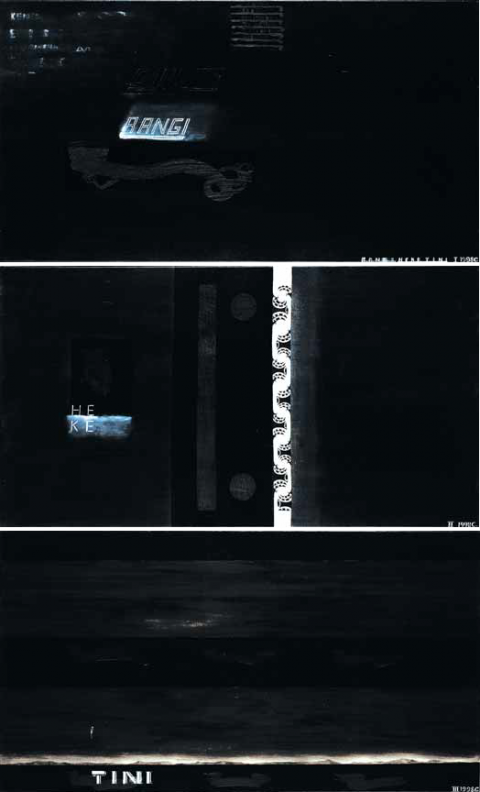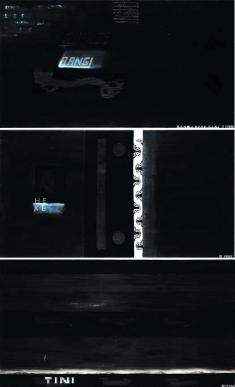Shane Cotton
Rangiheketini, 1998
Heke is name for a rafter in a meeting house and for the tendril of a gourd plant connecting the main stem to its new anchor points. In this imposing triptych the heke is both the name on the middle panel and a word for the vertical stripe of white which stands like a rafter would, joining the upper and lower parts of the painting. This connecting tendril between Rangi (sky father) and tini (the many, the multitude), stands as a rafter would, threading knowledge and power between the ancestral spine of the house and its supporting carved posts and the ancestors each represents, and their connection to the everyday world. The kowhaiwhai pattern on this rafter, kape rua (two eyebrows), lyrically re-states the theme of connection as the passage of light, enlightenment, and the thread of explanation.
Stare at this painting, peer at its blacks till your eyebrows double like the kowhaiwhai pattern. But shift your feet as you do, rock your head from side to side, and you will see that the blackness hides things that the glossy black reflections reveal: words (GIANTS in outline italic), sentences, abstract shapes, and a sinuous body with a tiki and a manaia head at each end. This latter is a hybrid ancestral icon invented by Cotton’s forebear artists to slip below the notice of missionary judgement. It is Taiamai, the ancient name of the central Taitokerau (Northland) region that is Shane Cotton’s turangawaewae (ancestral home). Rangiheketini comes from an important period when Cotton was re-connecting with Taitokerau as well as contributing to its lost regional art styles.
While there is much here of Cotton’s place in a Maori world, the heke is also suggestive of a thread of black which connects this powerful 1998 painting forward to his current work, but more significantly, back to the founding of Maori modernism in Hotere’s black paintings of the 1960s and 70s, to the beginnings of European modernism in Manet’s black, and further back to the enlightening humanism of Goya’s blacks.
Previously published in The Masterpiece Auction, 14 June 2007, Art+Object the 21st Century Auction House, Auckland, pp44-45.

